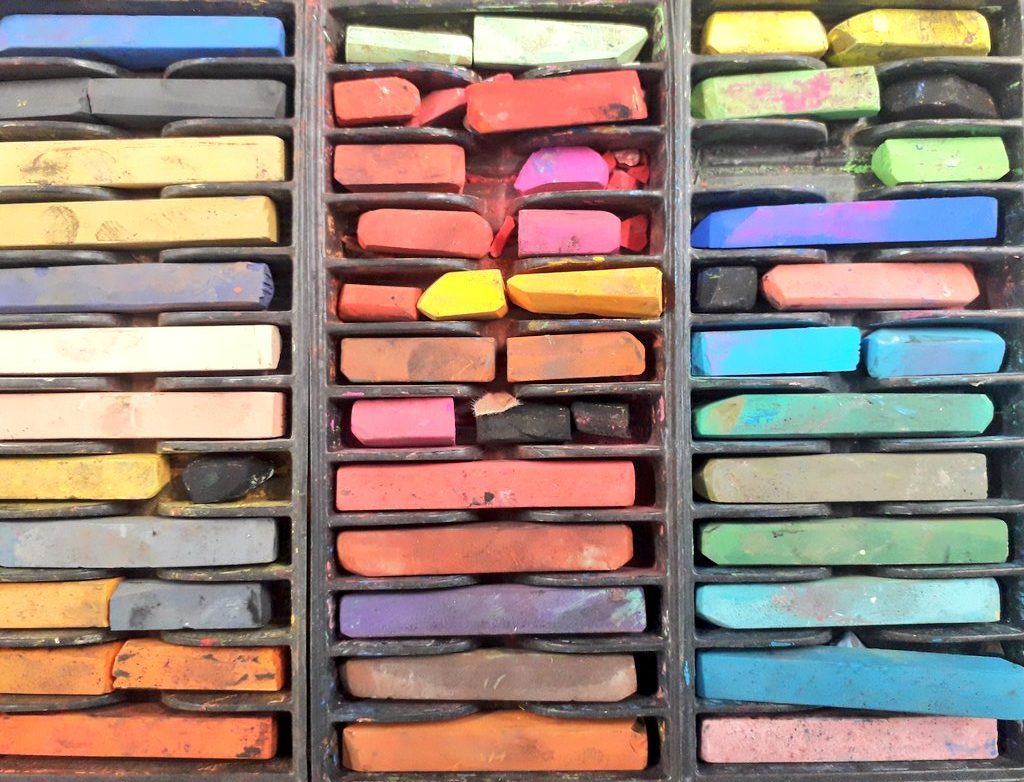Within the art world, creations by artists with mental health conditions or disabilities have developed into a well-established art movement known as Outsider Art, for which the public appetite grows steadily each year. But who gets to decide whether an artwork is displayed to the public or kept within the confines of medical confidentiality? What at first appears to be a simple question of legal ownership has, in fact, deep implications for the representation of disability and mental health in our culture.
Project Description
Who Owns Outsider Art? Exploring best practice in the use of visual artworks made in Art Therapy and Arts & Health
Dr Mathilde Pavis, Karen Huckvale (Co-I), and Tanya Barton (RA)
Sponsor: Exeter Wellcome Centre for Cultures and Environments of Health (£10,000)
Project length: 12 months (starting 1 January 2019)
About the Project
Today, the practice of using art-making to improve health or wellbeing is well-established and growing. Going by the ‘umbrella’ term of ‘Arts & Health’, practitioners are drawn from a range of professions, ranging from registered medical professions (e.g. Art Therapy) to unregulated therapeutic or social work (e.g. Arts Psychotherapy, Community Art). In the art world, the popularity of the art made by artist-clients or artist-patients, called ‘Outsider Art’, has exponentially increased in commercial value over the last decades. These artworks are thus unique, for they attract the interest of the medical profession, the art community and the art-buying public in equal measure. This level of interest exacerbates the desire to show the artworks beyond the walls of the therapist’s office or the art studio. Yet, the right to show the artworks and share them with the public rests with their owners. But who owns them? Is it the artist-client who made the work, or is the supervisor, carer or therapist who oversaw their creation? Who gets to decide when and how the artwork is to be displayed or stay confined to the confidentiality of medical records? Who is best placed to decide on the future of such pieces? These are the questions this project seeks to explore.
The ethos framing the use of clients’ artworks, which in large part relates to the ownership of the work, is a divisive topic in this field. Each Arts & Health profession approaches the ownership of the artist-clients in a different way. These differences, which until recently have been strong divergences, underpin the classification of Arts & Health professions currently cleaving the field. For this reason, the question ‘who owns the artwork?’ is a politically-charged one in Arts & Health, for which a clear and straightforward answer is yet to be given. This project proposes to bridge this critical gap in understanding by gathering empirical evidence of behaviour, working directly with artist-clients and Arts & Health professionals specialising in different practices.
Adding another layer of complexity to this issue is the fact that the ownership of artworks is, ultimately, a matter of law. A traditional doctrinal analysis of UK law would be ill-equipped to tackle the ethical implications at play and the potentially negative impact of the law on the agency of people with mental health conditions or disabilities. This is because very few laws were designed to account for the position of artists with disabilities. Nevertheless, existing regulations, however sparse or ill-suited, remain binding on practitioners in Arts & Health and their clients. For this reason, the project brings ‘Law’ as a key strand of the research to confront existing regulations to artist-clients’ and therapists’ expectations of ownership.
The aim of the project is to identify or uncover pivotal, transdisciplinary values, across all fields and perspectives, to inform the legal concepts of ‘capacity’, ‘personhood’, ‘impairment’ and ‘ownership’ — key to this question. This new transdisciplinary knowledge will assist an inclusive interpretation of the law conveyed in contracts, codes of best practice and court decisions going forward.
In order to tackle the multi-faceted question of ownership in Arts & Health, the project adopts a transdisciplinary research method which brings together academics, practitioners from Arts & Health and Law, as well as artist-clients, to explore principles of best practice for the management of artworks. The research team will survey existing practices and understandings of ownership of artworks in Arts & Health to compare these to the provisions made by UK law.
The research aims to find a common ground between Arts & Health practice and the Law to resolve conflicts existing in either discipline by pooling their complementary knowledge, experience and skills. This will take the form of up to 12 one-to-one interviews with former artist-clients followed by 4 workshops with the relevant professionals in Arts & Health and Law to analyse the interview data and the concept and process of ownership. The findings of the project will be communicated in the form of an online exhibition showcasing the imagery and writing produced by participants during the research.
This project is co-lead by academic and law specialist Mathilde Pavis and senior art therapist Karen Hucvkale, with the support of research fellow and law specialist Tania Barton.
Select Outputs
Project outputs are currently in development. Data and findings will be communicated via an online exhibition and a written report describing the research methods an conclusions. Delivery is expected by December 2019.
Photo: © Mathilde Pavis

